December 16, 2018
Martha O'Kennon
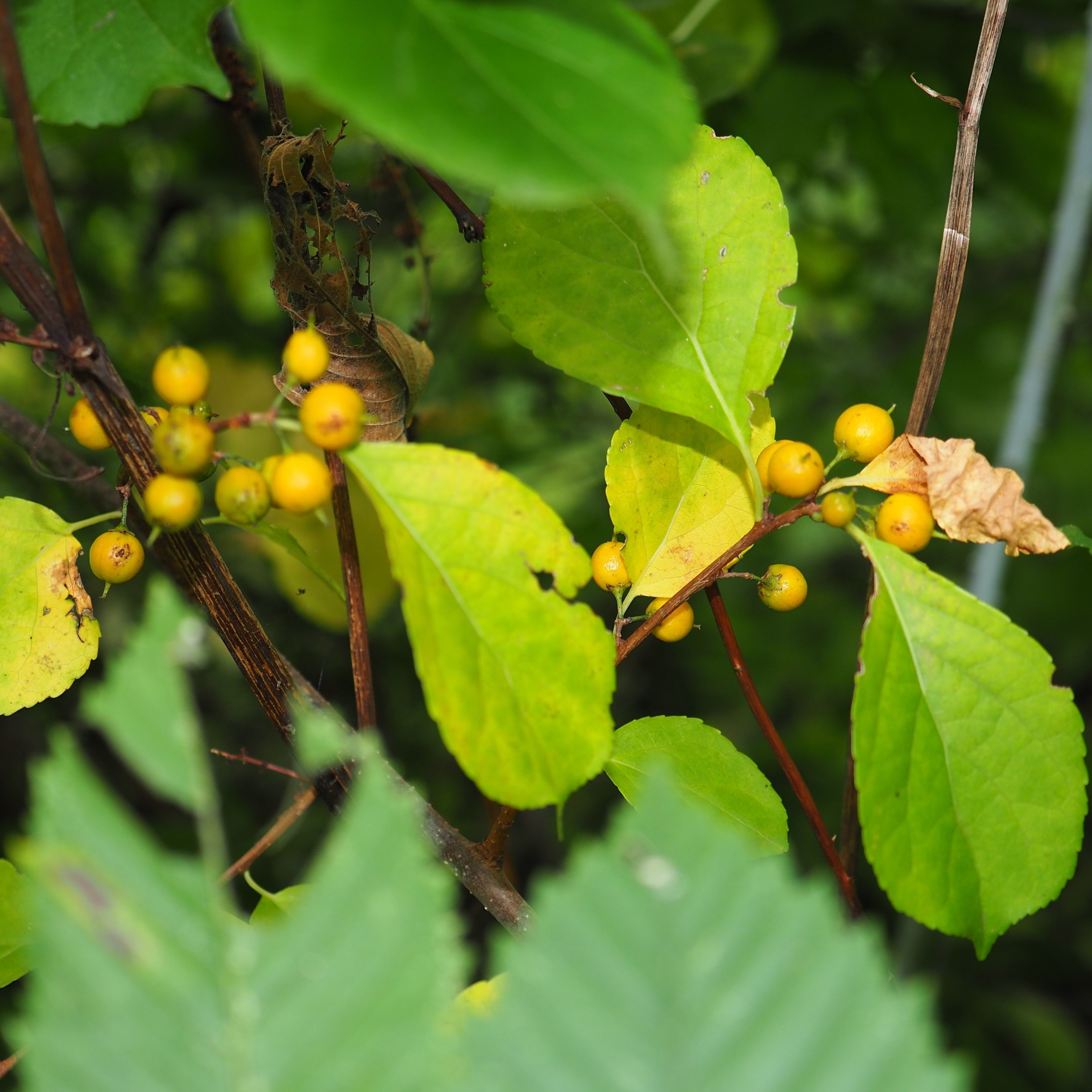
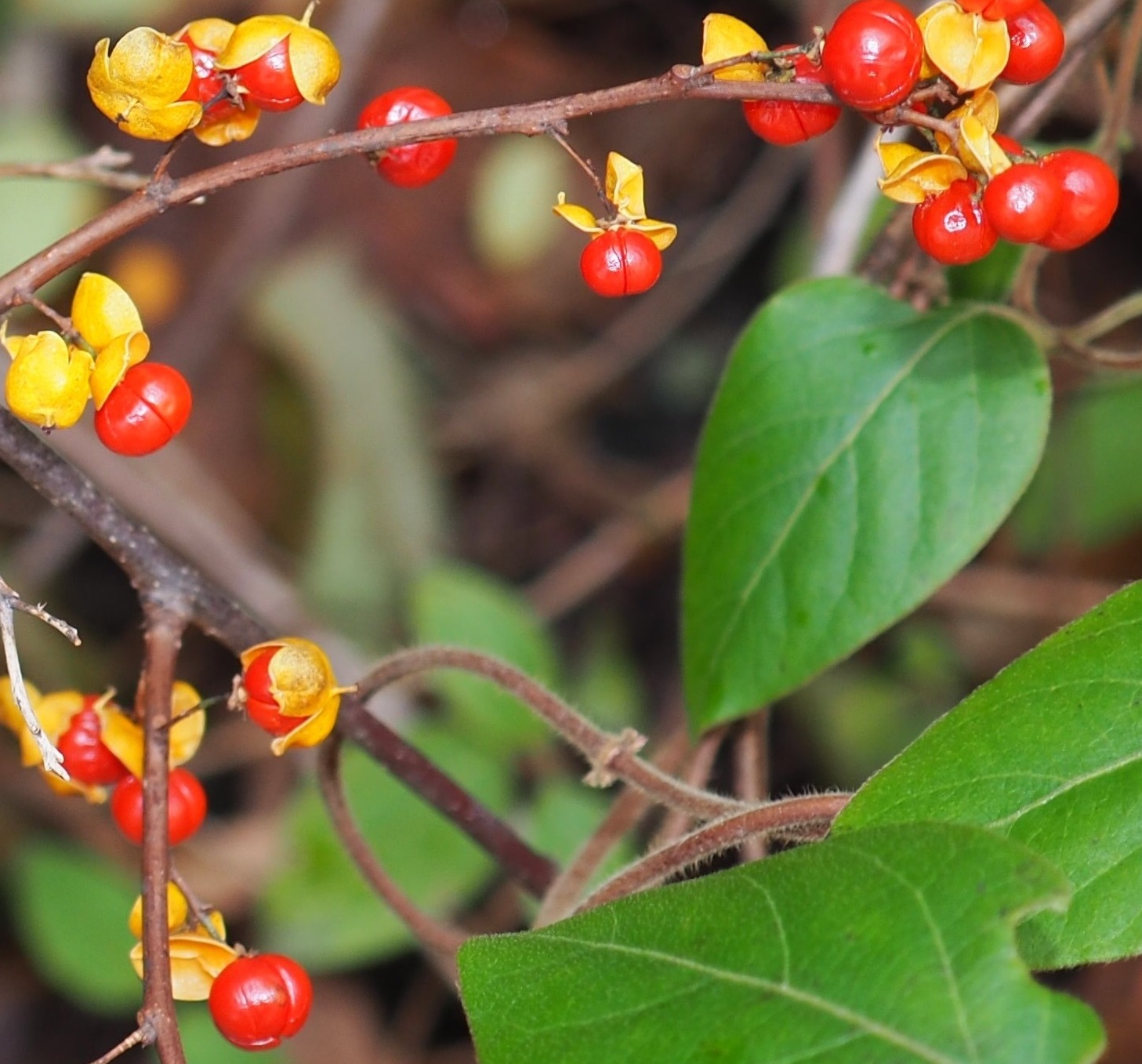
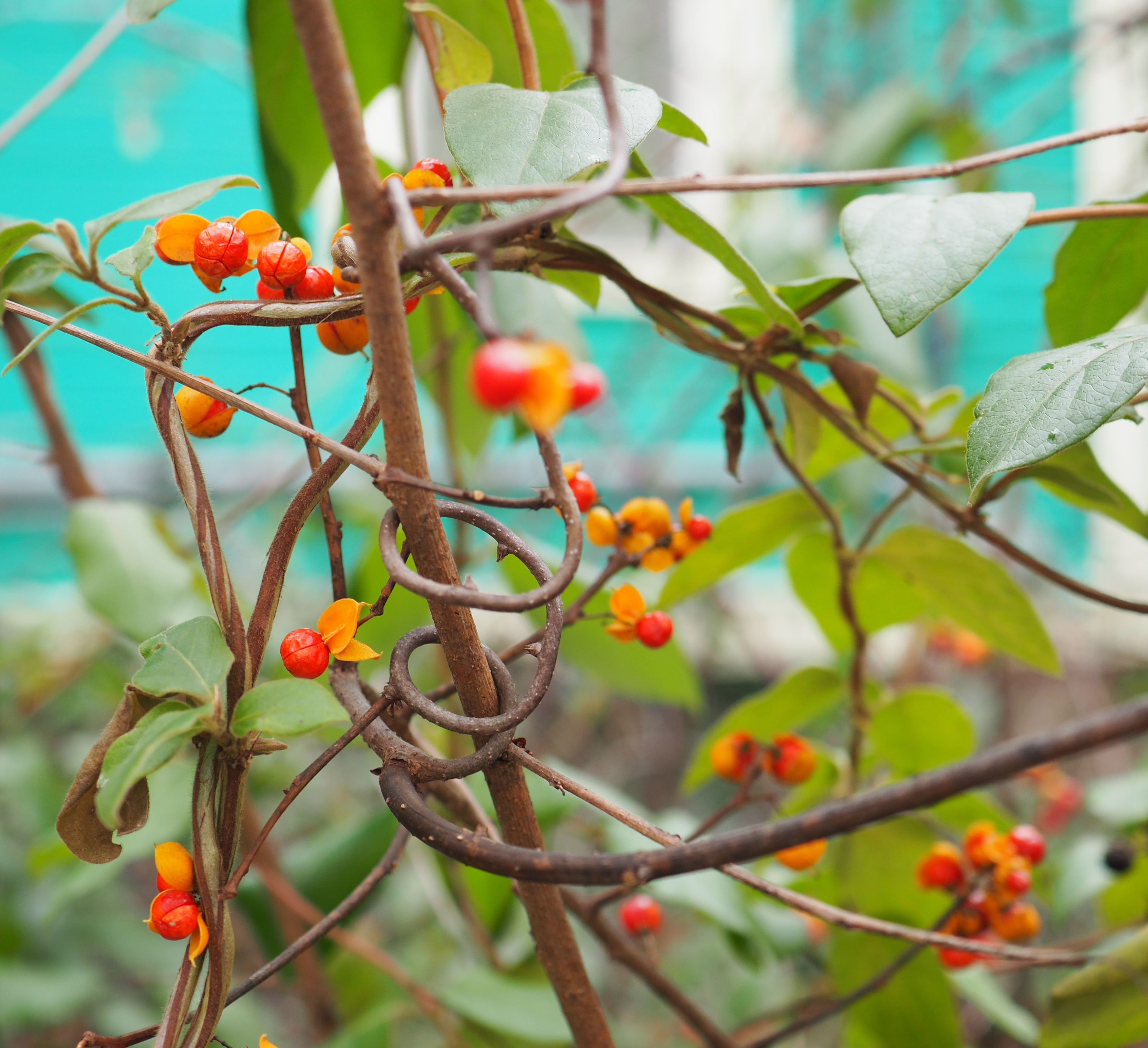
Dull, Dreary, Quiet, Dark. That about wraps up the description of the first two and a half weeks of 2018. I've almost stopped going to the North garden, but the one day I did go out there to see no cheer and no life, I was shocked to view something that must have been there for years. I don't remember planting Oriental Bittersweet anywhere. In fact I would have torn it out if I had seen any, on the advice of all the "natural habitat" writers. Good advice. The central "bed" is full of it. I'd gotten an ID for it earlier in the fall, but did not equate it with the rampant bittersweet patches of December 2018. So what you are seeing here is a photo from September 28 of the Oriental Bittersweet unopened, and then two pictures from November 25 of the usual view of Bittersweet. Look long and hard, since the "scenery" in December is very limited.
Remember that there is information in the name of the file for each image. You can see it by mousing over the image - look at the lower left of the screen. Or you can click on the image to get to the (usually) larger image. Then the info is displayed in the address line above. Sometimes the second click will actually display a different view of the original image.
I hope you remember the apology from the December 2nd edition - about the name(s) of the Small Honey Ant AKA False Honey Ant. They are still synonymous. The same. The False honey ant is the Small Honey Ant. Small fails when we are talking about the huge orange ant who mates with a tiny wasp-looking creature (picture 3 from April 2017). She (huge orange winged ant) and he (tiny black waspoid) are both real honey ants, i.e., Small Honey Ants. Got that? I almost have. And what's more, those two males will eventually worry themselves down to one winner.
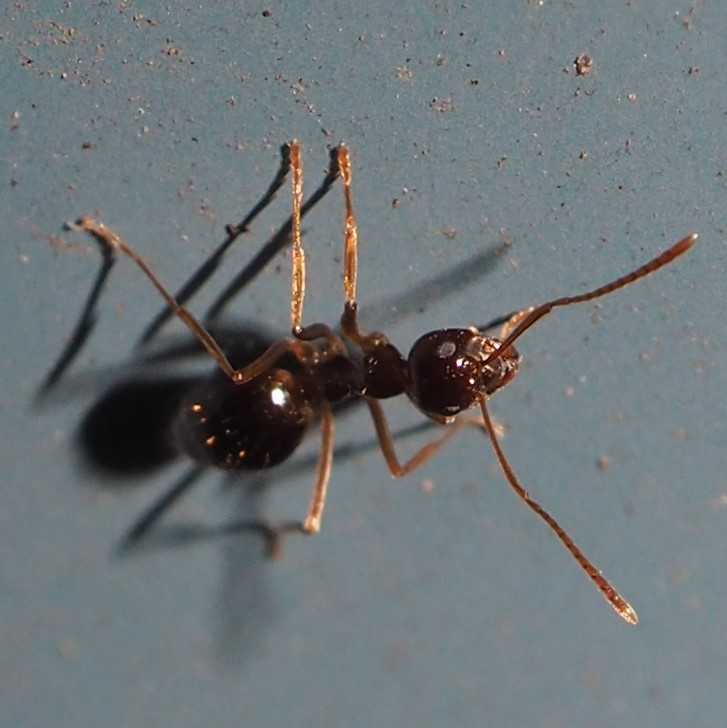
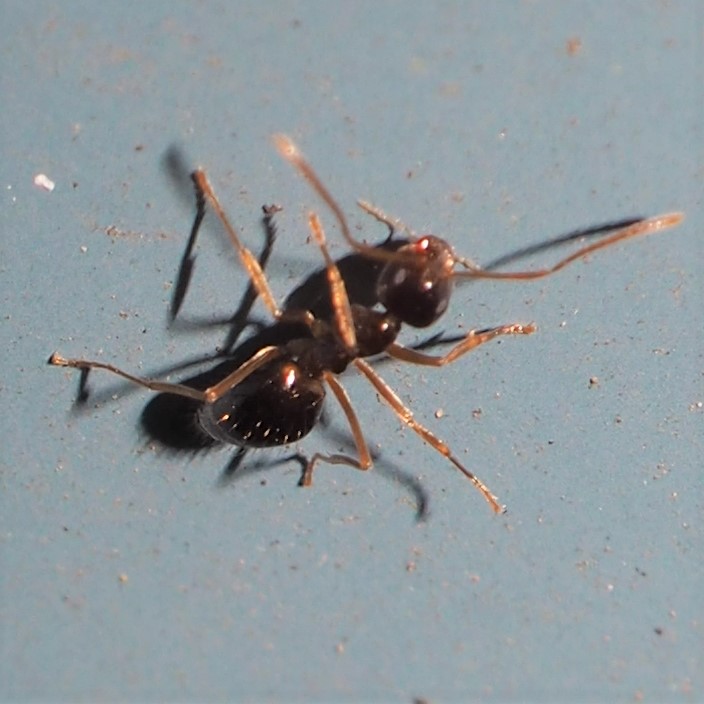
 and two tiny males 4 10 17 2.jpg)
We still have some of the barklice, including my favorite, what I call privately among myselves the "tiger". The next two are shots of the orange barklouse (or aphid or psyllid) who is a lovely specimen though still unknown (to me).
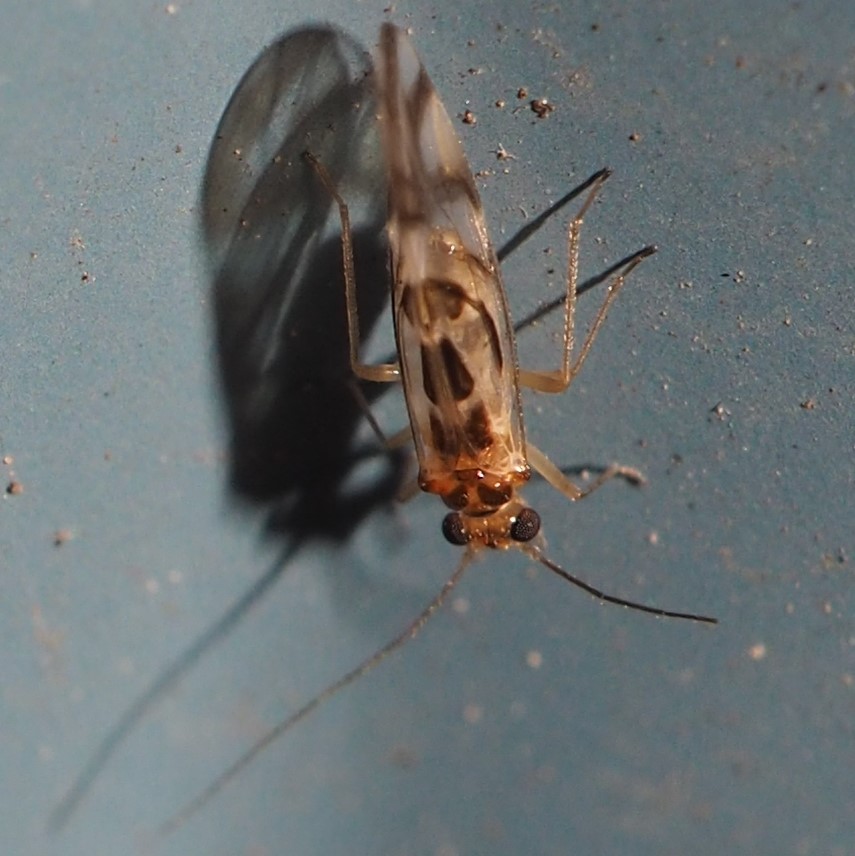
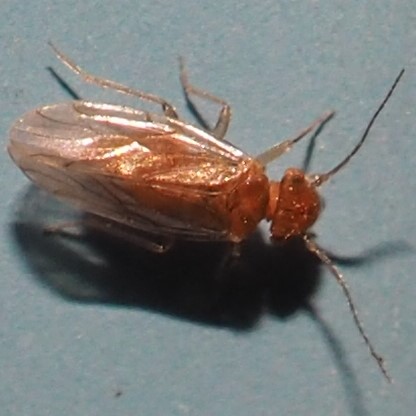
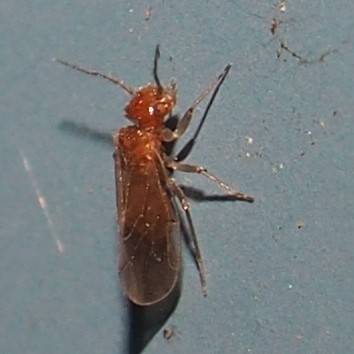
I can't remember why I copied a picture from September showing a metallic olive green flea-beetle wanna-be. But I did and they're pretty, so let's enjoy them and I'm sure to figure out why they're here, the moment after I press the send button. So two olive green beetles and one mysterious red one.

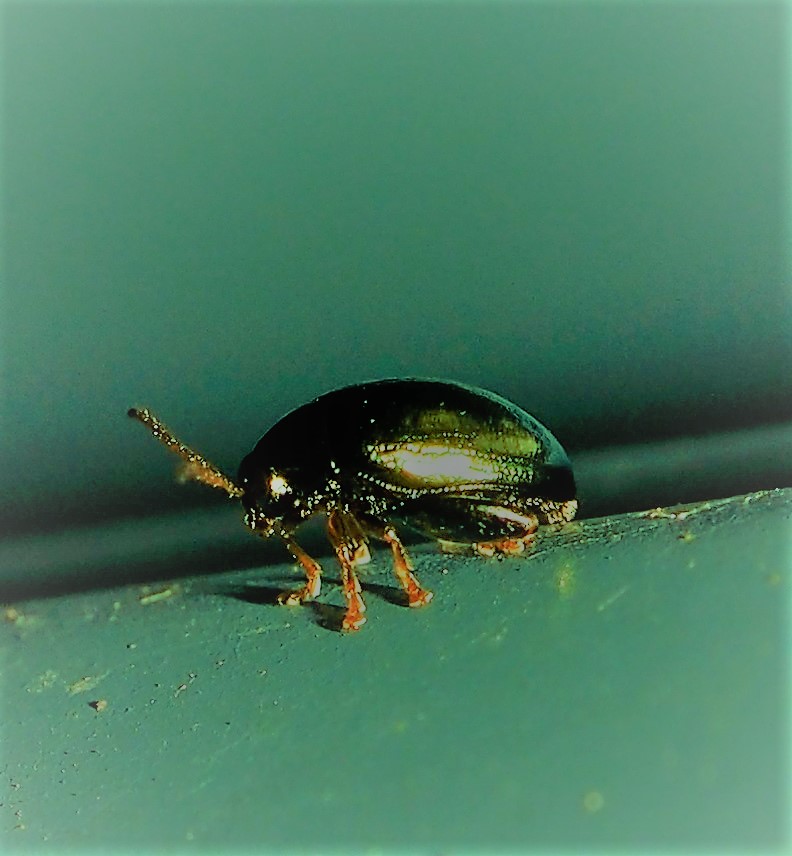
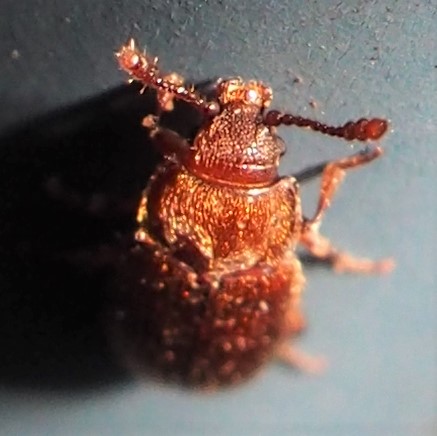
Here are a couple of shots of a black Rove Beetle,
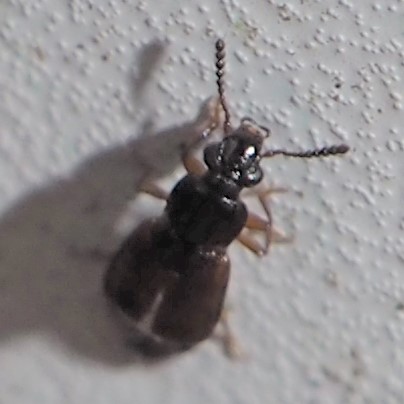
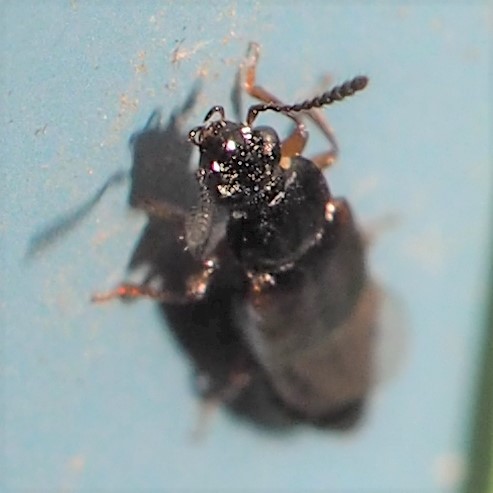
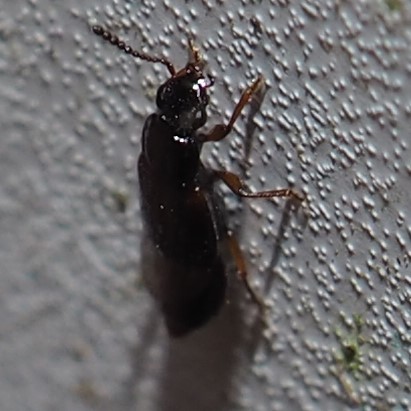
Here is one of the instars of the beloved BMSB. Just so you can recognize it. Next is a member of the Tribe Drymini, a relative of our native son, the Drymus Unus, still here (number 3) and the most faithful bug to appear on the Wall of Fame (the metal siding of the workshop) this month.
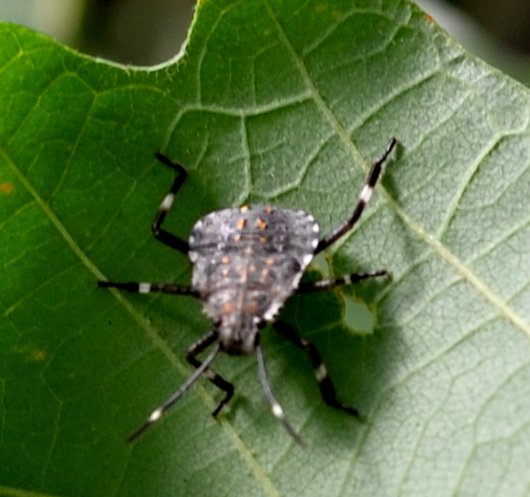
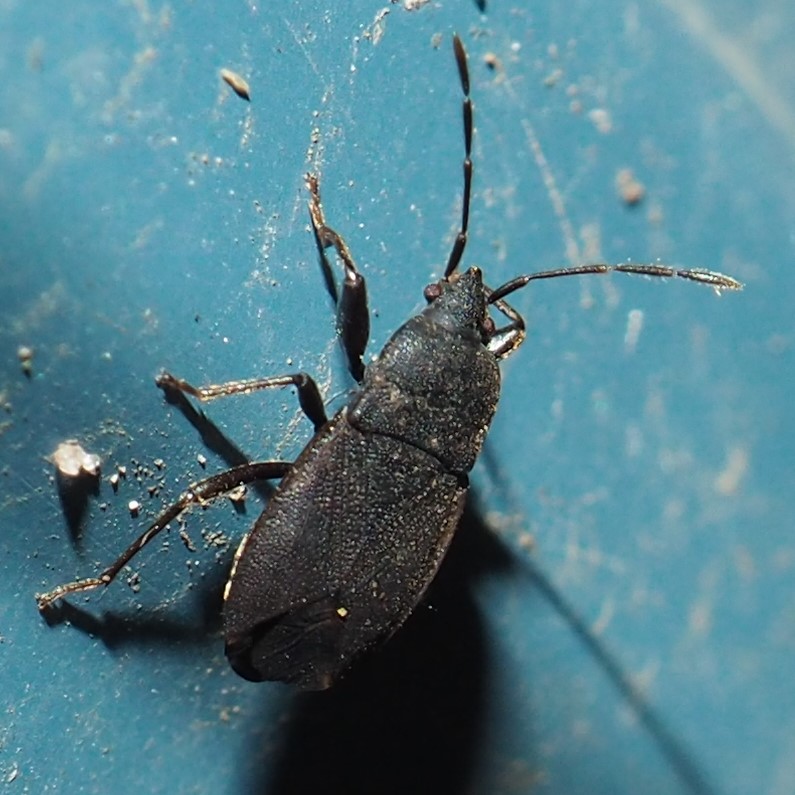
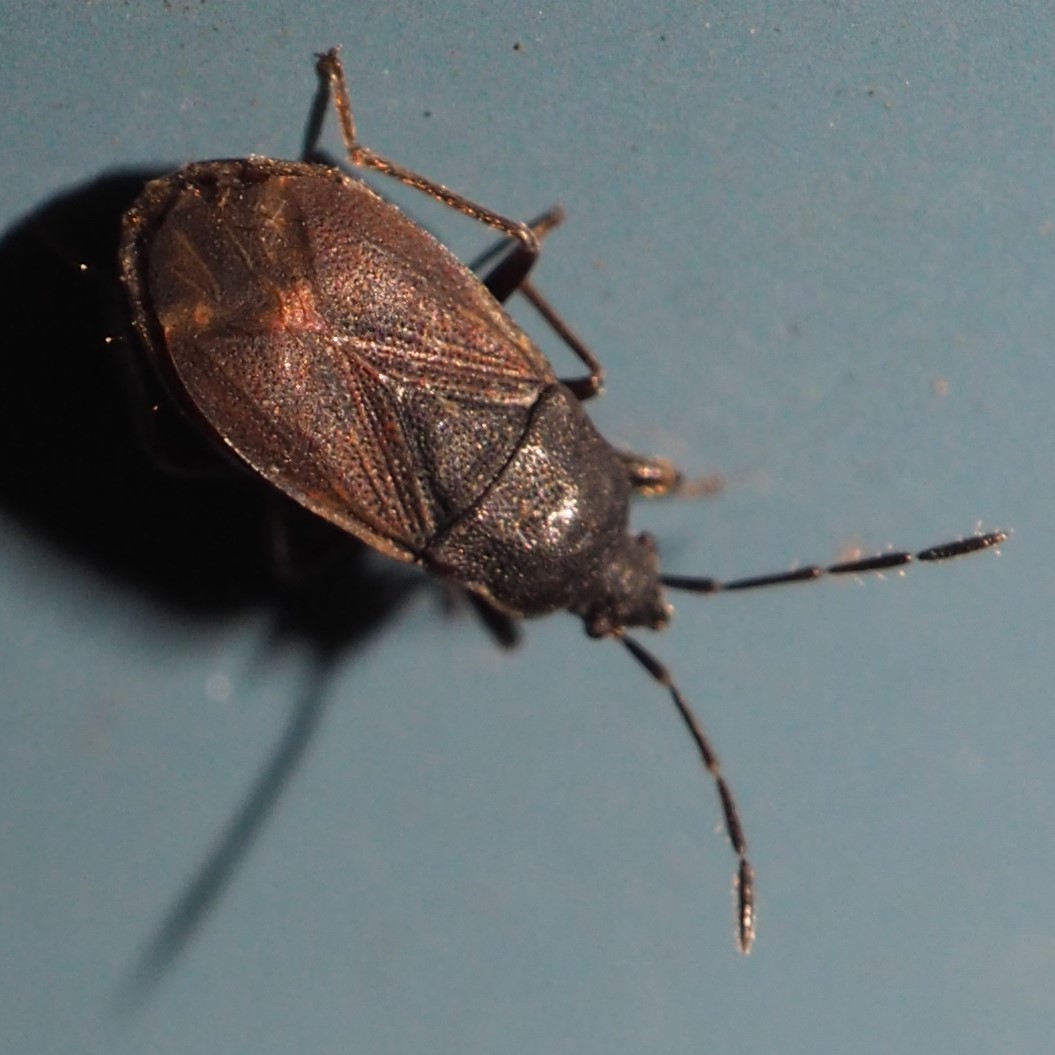
This is a very tiny little creature, possibly a Hopper of some sort or maybe a kind of Barklouse..
Maybe it is even a mating pair. Then comes another Hopper, a brilliant orange one. It may be a Planthopper - it isn't a Leafhopper since none of its legs is spiky. But third was a very dark picture which turned out to have enough detail to see some spiky legs and so a very possible Leafhopper!!!!
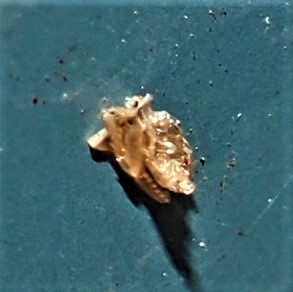

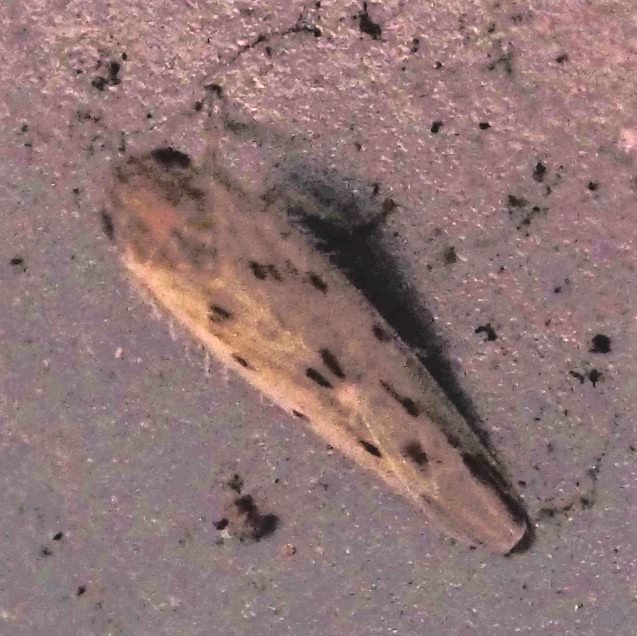
Another possible Moth in a case. And some kind of supine critter. Third seems to be some kind of egg mass hatching into tiny creatures. Wonder what?
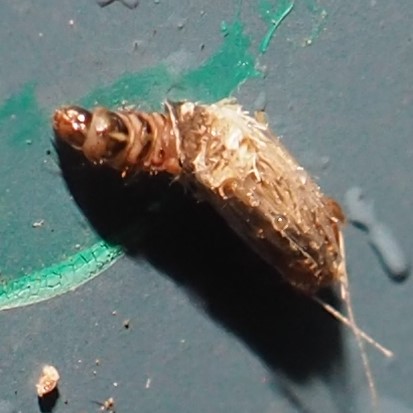
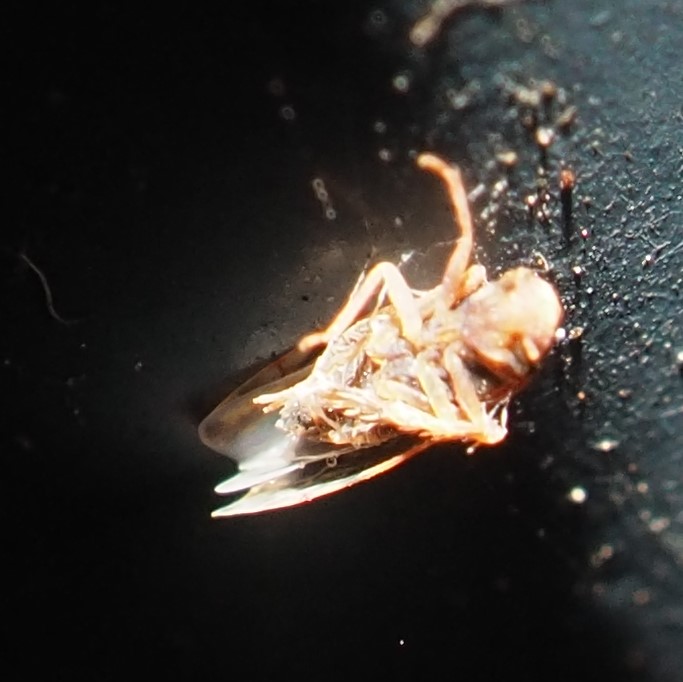
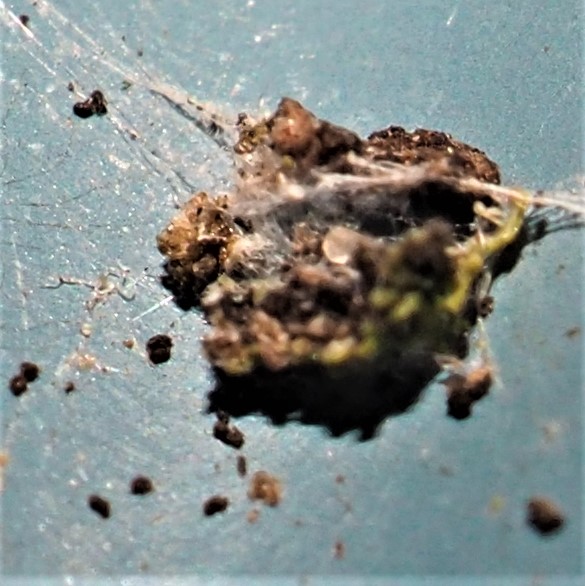 moth in case 12 13 18 3
moth in case 12 13 18 4
moth in case 12 13 18 3
moth in case 12 13 18 4
I believe this fellow is a long skinny crane fly; and that the second one is a gall midge, though they both have spotty wings. In fact, I have just changed my mind in front of your very eyes. I now think they are the same critter, and likely a crane fly. Third is a fungus gnat or a gall midge. I think the gall midge has the longer legs than a fungus gnat.


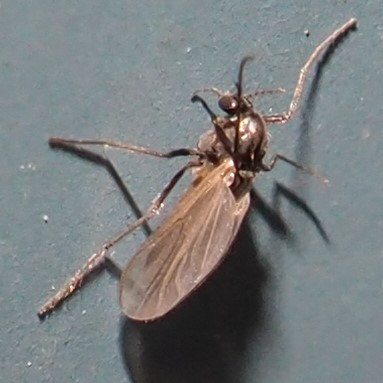
This small black fly with a roly-poly abdomen may be a Lance Fly. I have always had the habit of calling them Torch Flies, which I believe is a non-existent creature. Second is a female midge. You can tell her from the midge above, which has fluffy antennae. This one has nice straight antennae, whereas in this last picture we have a fluffy-horned male.
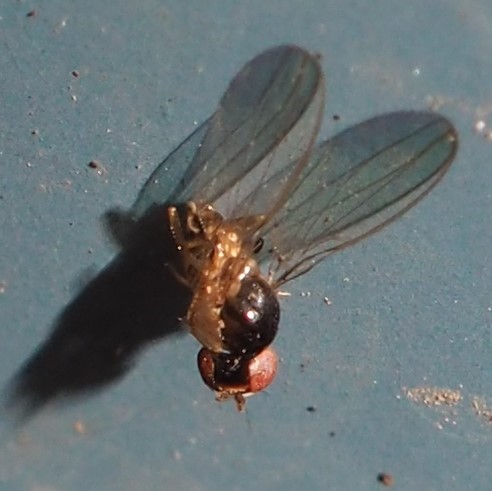
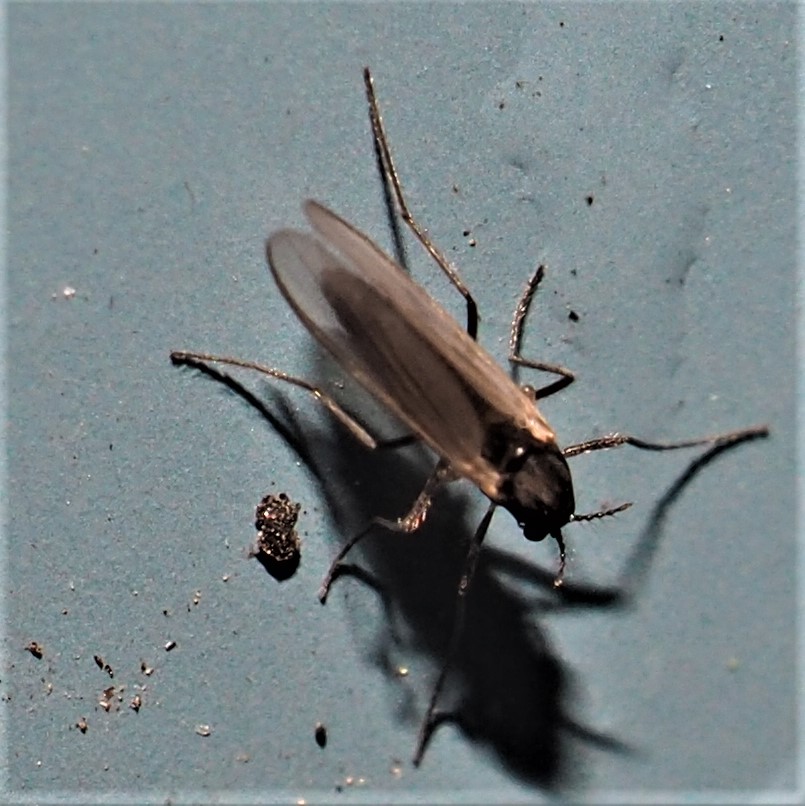
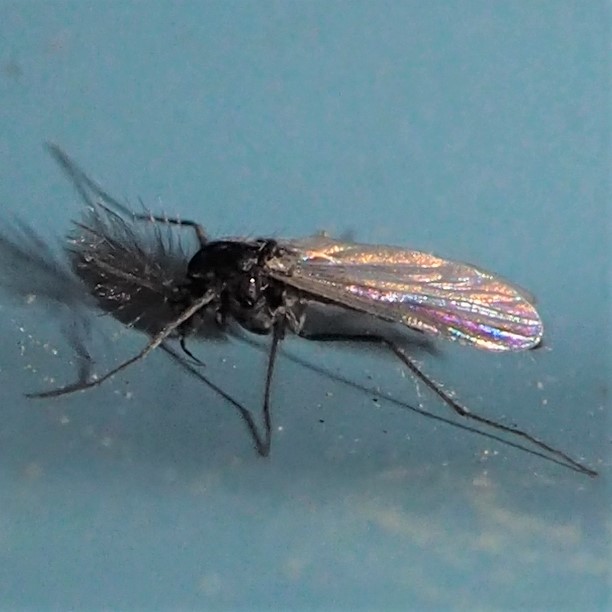
This first one looks like a moth fly. The second one was identified for me in iNat as a
Cluster Fly by @entomokot, and the third is the same.
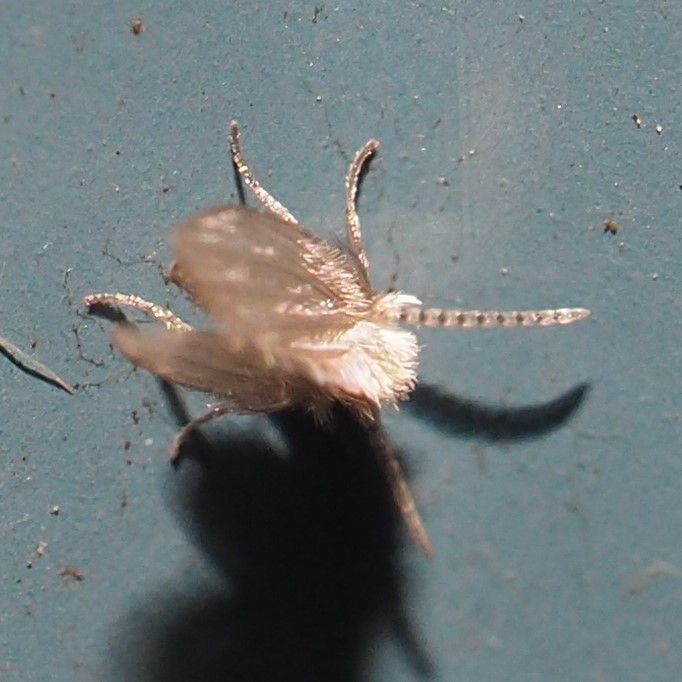
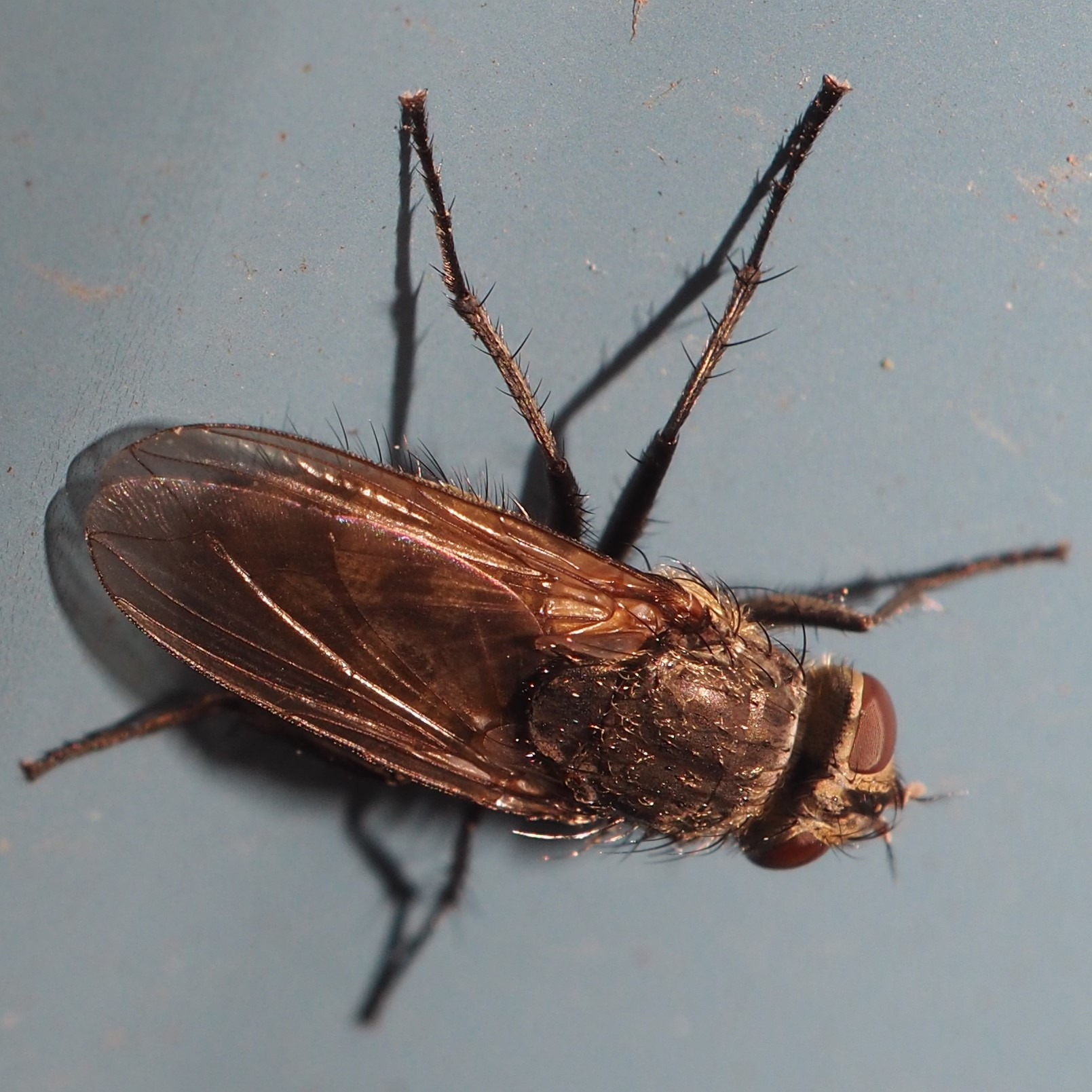
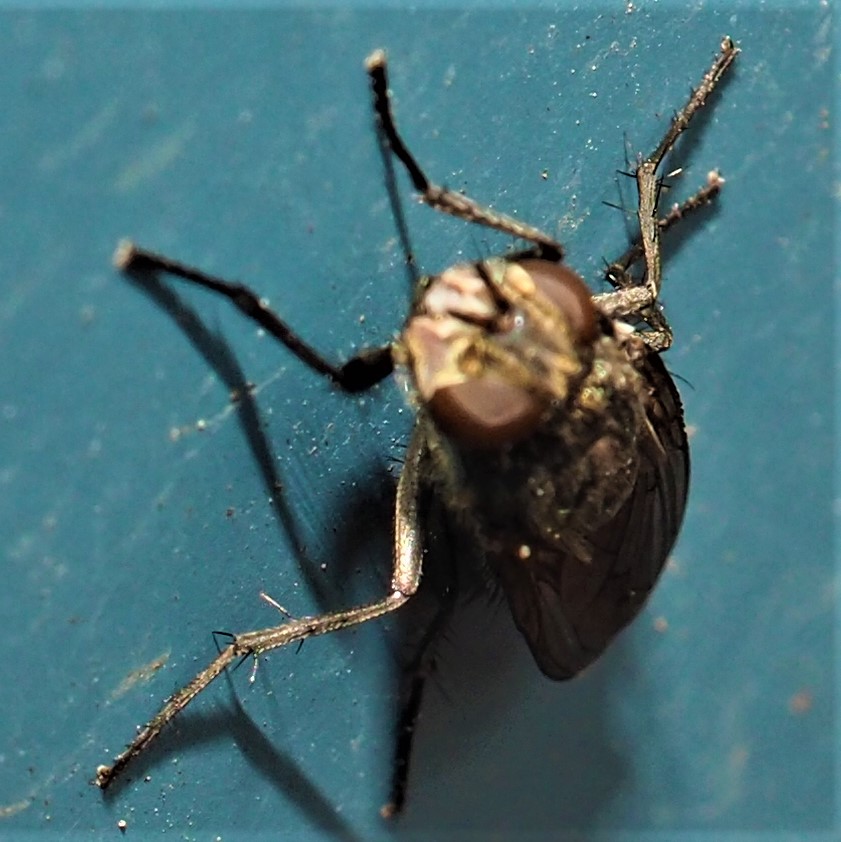
This first thing seems to be two green entities, maybe mating. Small worthless Prize for someone who comes up with the best or funniest identification. It will be arriving by email so you will agree it must be small and worthless.

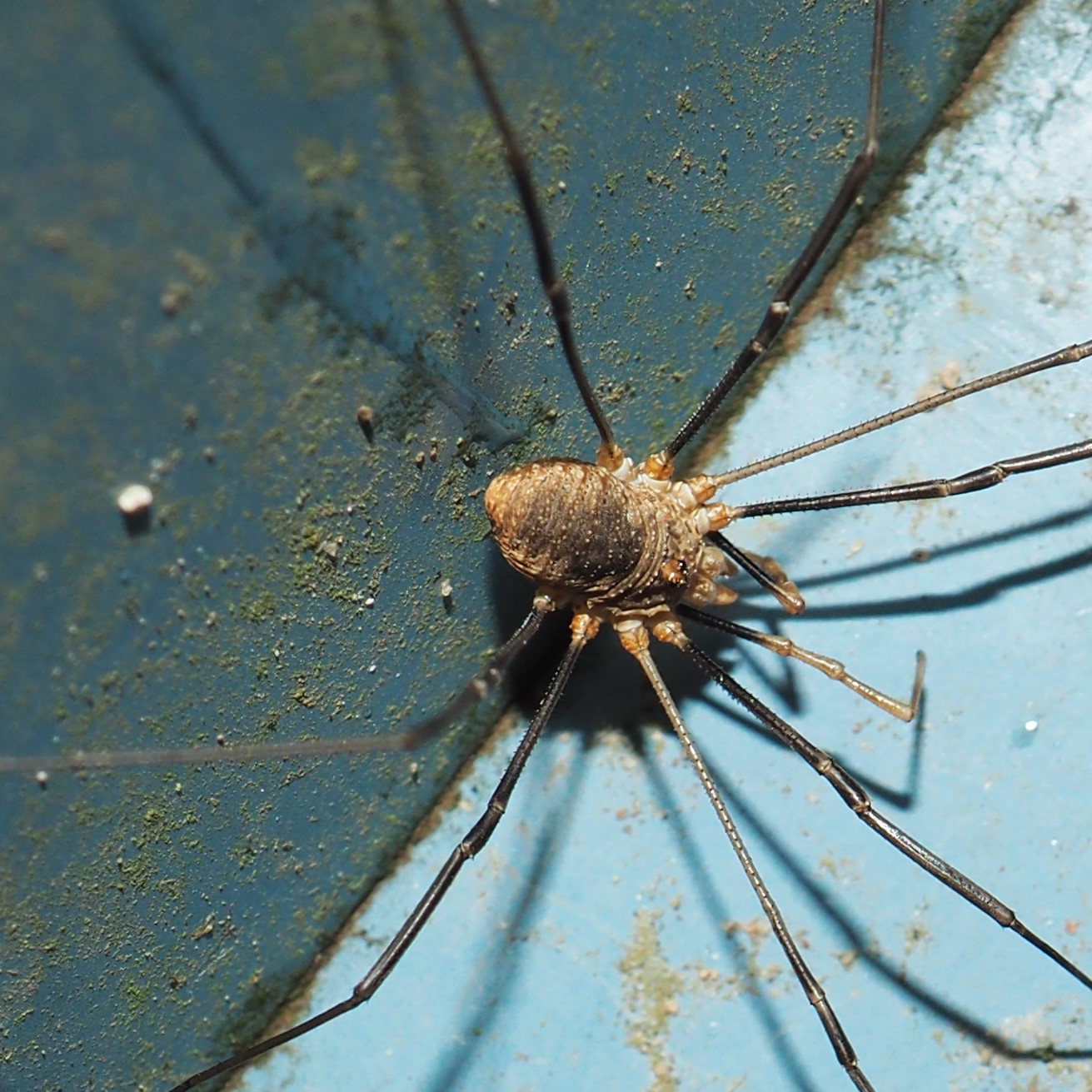
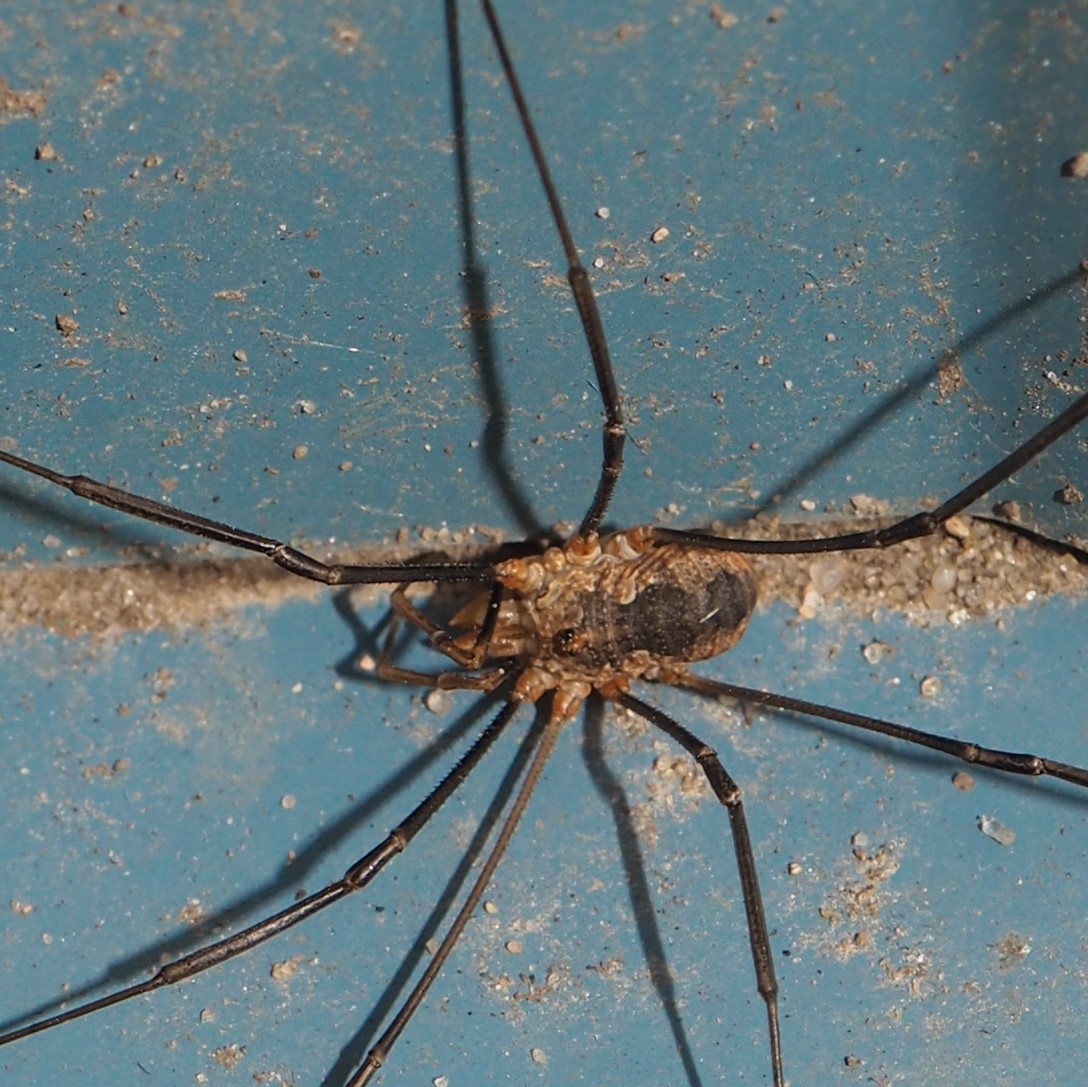
I've no idea what the walnutty-looking thing is that seems to be emerging from the stuff to its left. But you can see from the second picture that the little floating heater in the pond is keeping a melted hole open. You can even see a faint reflection of the sky in the hole. I thought you might like to see some of the garments I've been making - this is a shirt - the fabric is from Jo-Ann's, in the kiddy section. But I thought it expressed my random thoughts quite well.
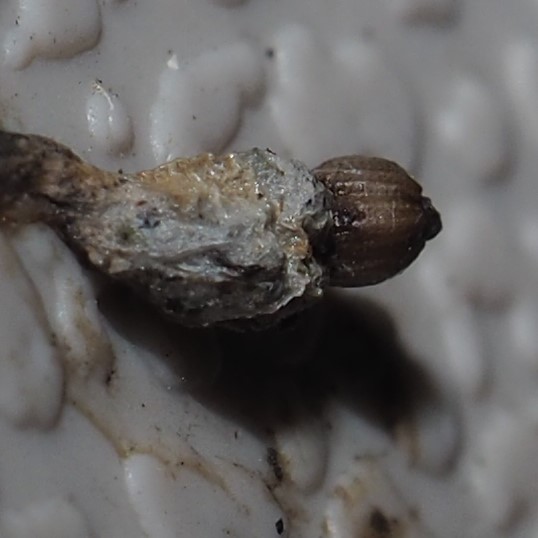
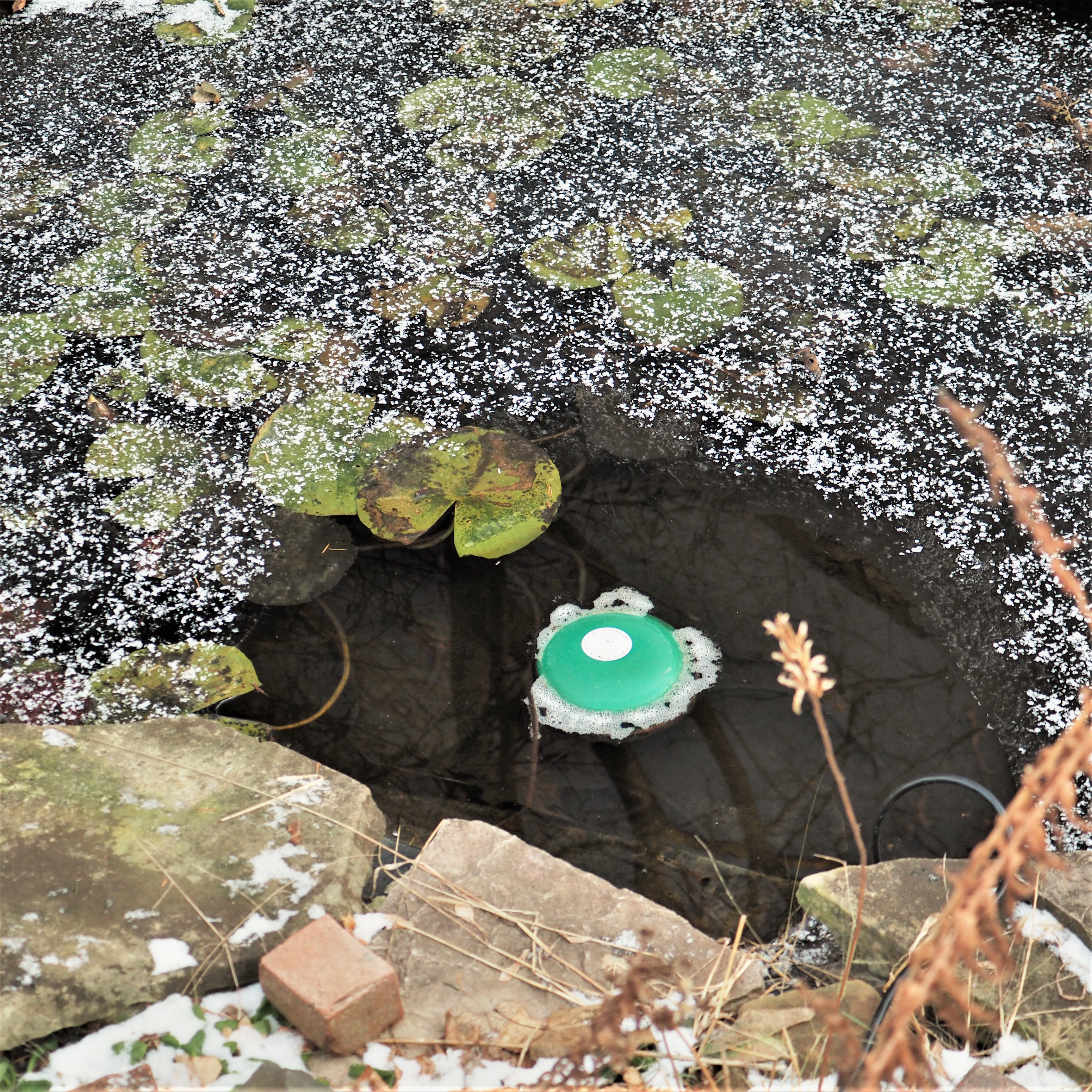
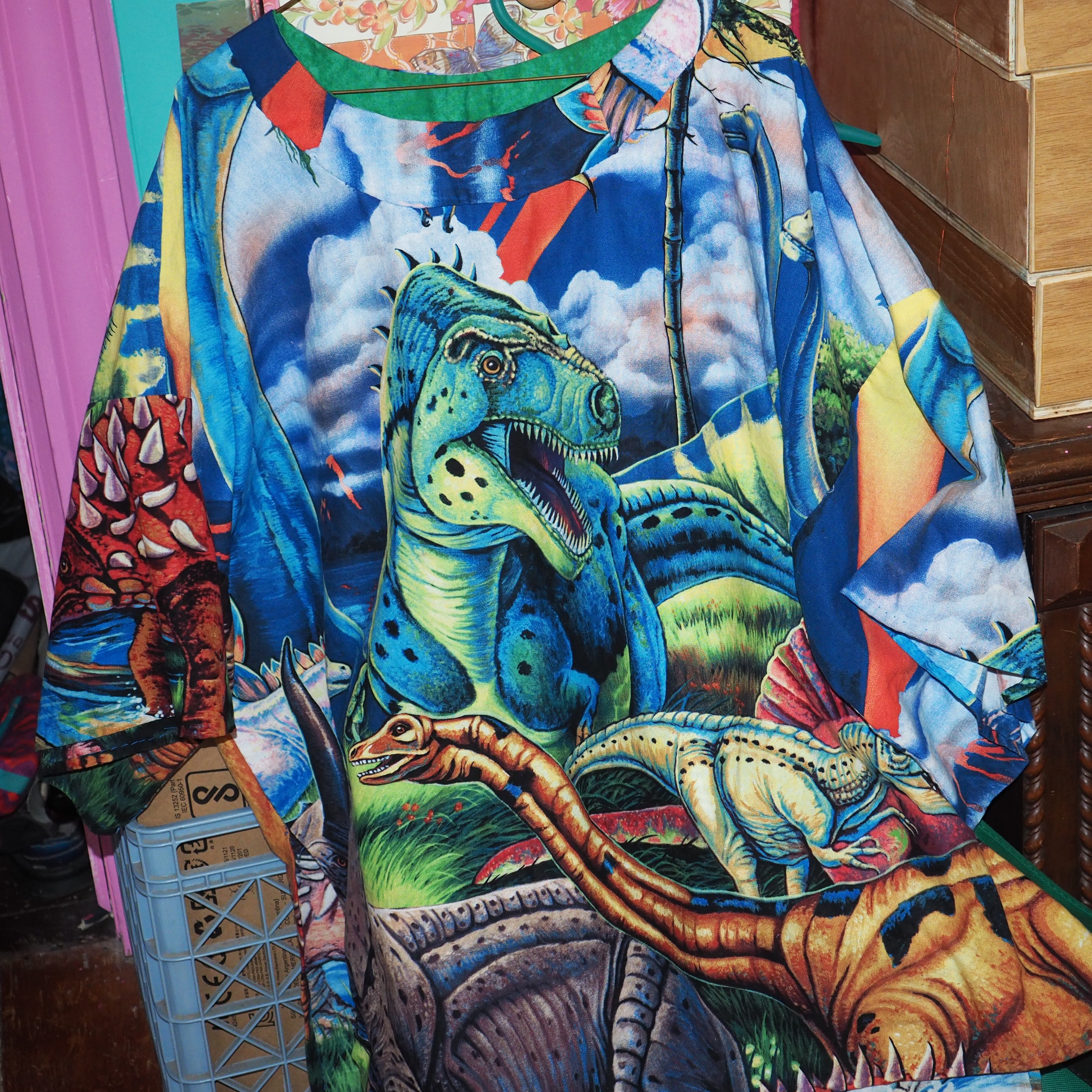
I opened up the shop the other day and found this Common House Spider inside on the wall. In picture 2, we seem to have some kind of egg mass hatching out a lot of baby somethings, maybe spiders. Picture 3 shows another spider from the inside of the shop wall, a cobweb spider I figure, as that's what I always think of when I see a spider with a nice round abdomen.
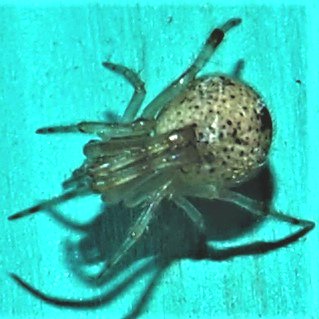
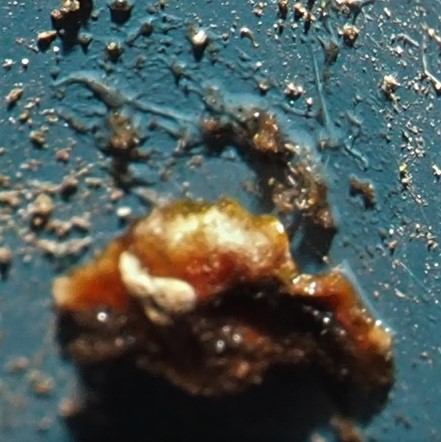
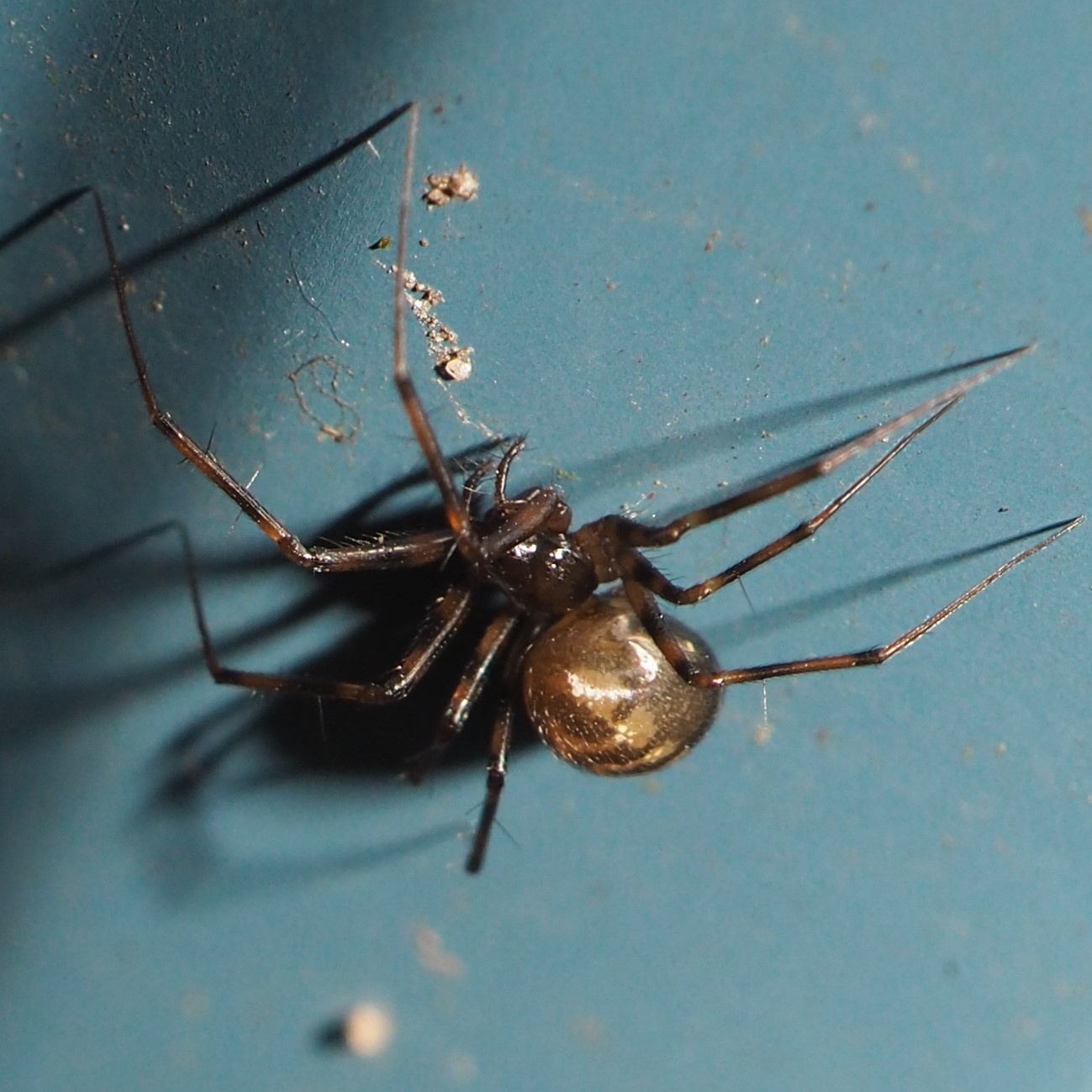
I had gotten into the habit of calling any spider with two flattish segments as "ground crab spiders". But my new friend @tigerbb has got me at least wondering about my ID's. She says this is a Bassaniana. Wow! Second I guessed, because all my grass spiders have pointy butts, so maybe all spiders with pointy butts are grass(maybe)- it worked for this one. Third was a real surprise - it was out on the bare siding and tiny! But I took a number of shots as it was showing off several luscious poses. It is a BABY Orchard Orbweaver. I had the hardest time learning to recognize the infants. But they have a red spot that sort of turns into a red rainbow as it matures. By the way, a milestone. The Orchard Orbweaver above Texas and the ones below have speciated. I think that Texas now has two kinds. Michigan only has one so far, and Florida has a whole different species. How exciting, huh?
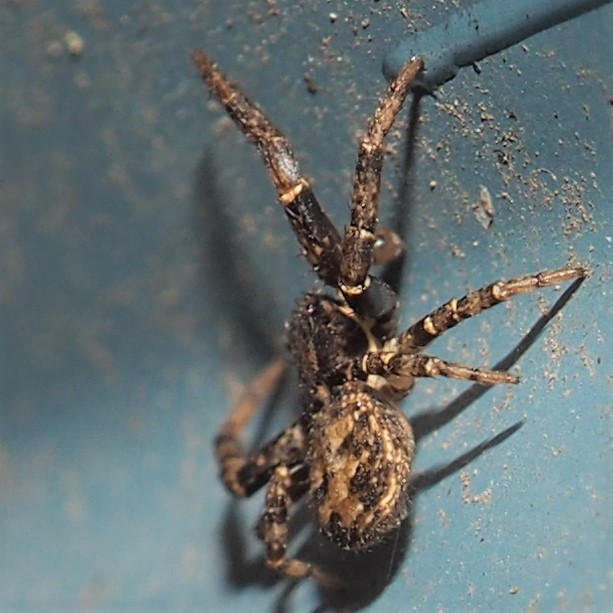
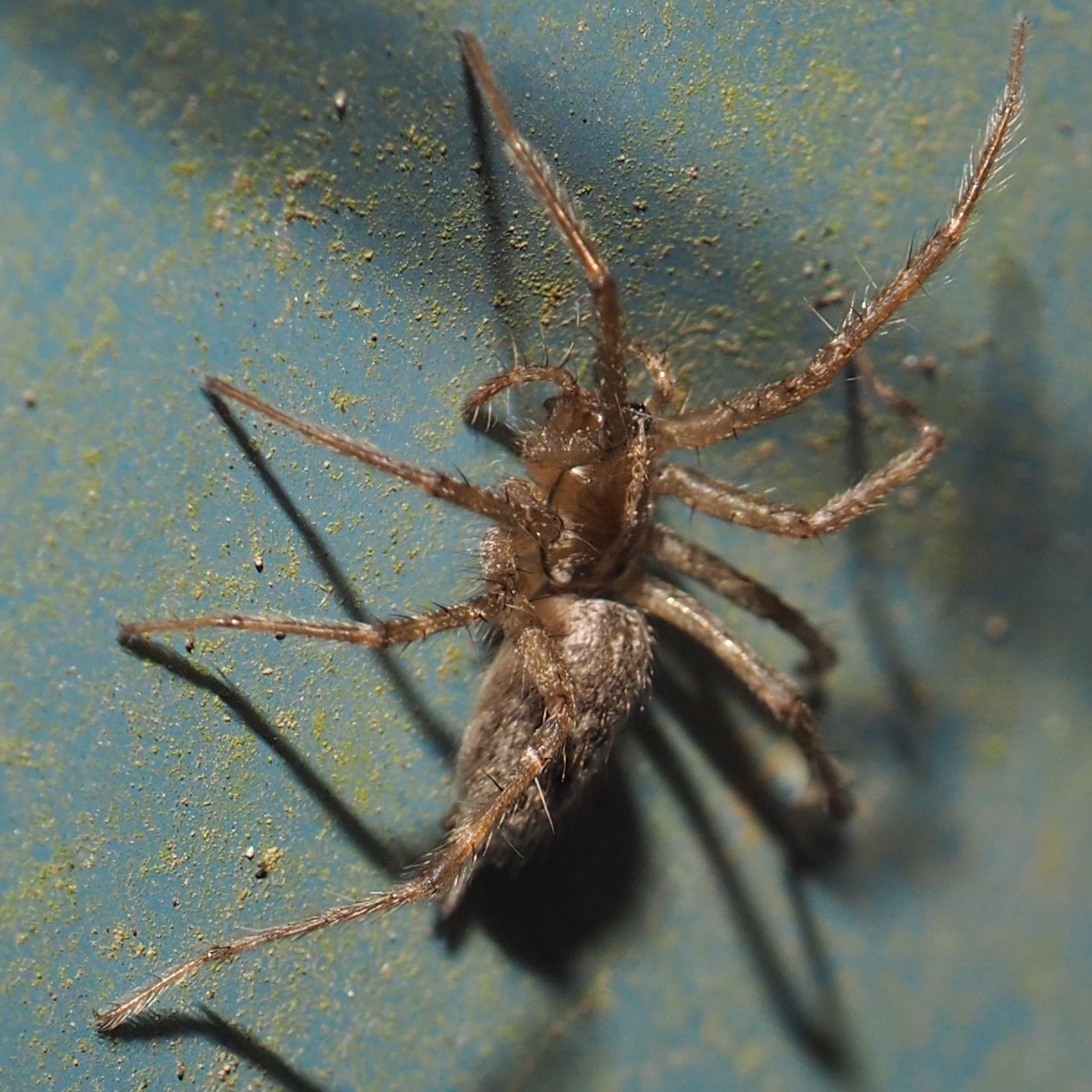
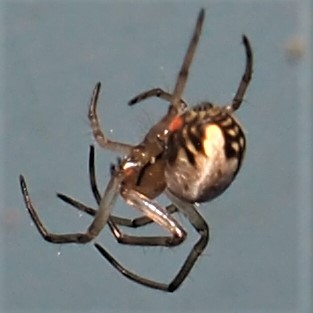
The BIG surprise was the appearance of a humpbacked orbweaver, Eustala genus - I have to look up its species name! It is a greenish highly patterned spider that I have now seen every winter for three or four years, and NEVER in any other season. They must drop down from that blue spruce behind the shop, to sun and collect meals. Now we know they're back!
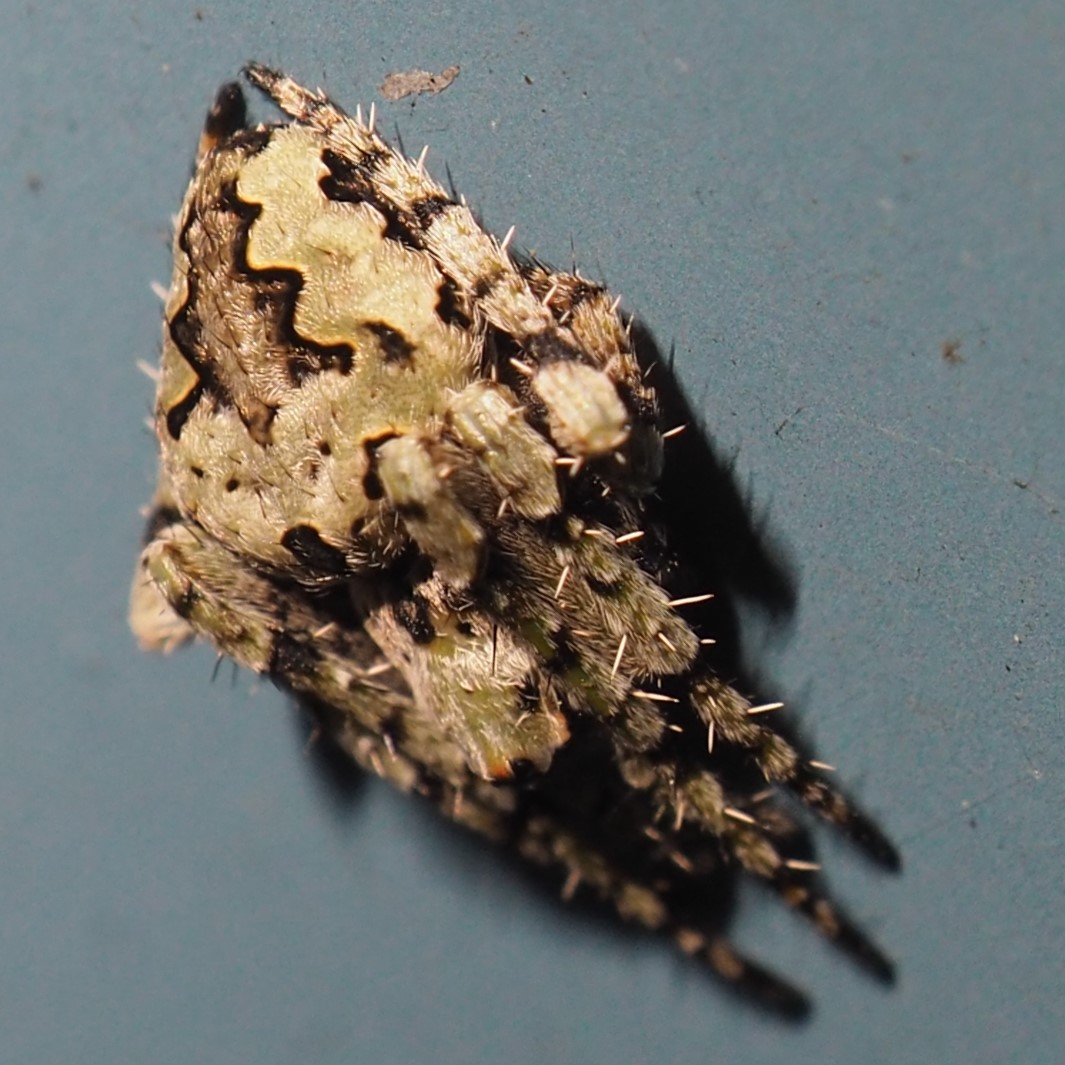
But we also still have a couple more mystery spiders (un-ID'd). This first one has legs all the same length and runs like a tank (what does that mean? discuss among yourselves). The second was in the shop and is a total mystery to me. I never saw that shape before. Another thing that has come back is one of the gall wasps. At first they look like a very fat-butted ant, but then something clicks from last year, and the pictures match. Here's one. I'll get you a bunch more next time if you beg for them.
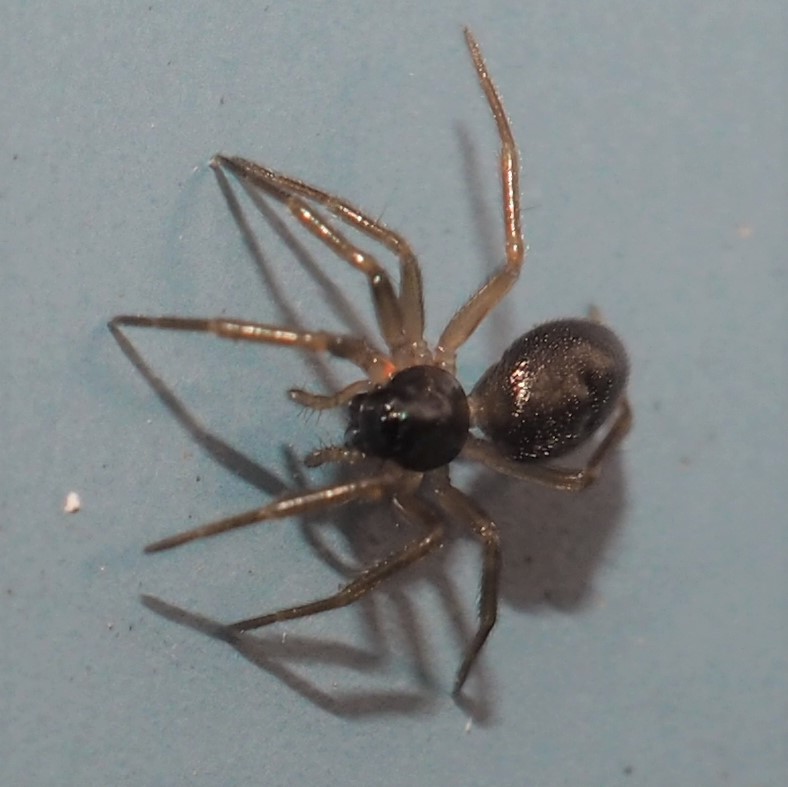
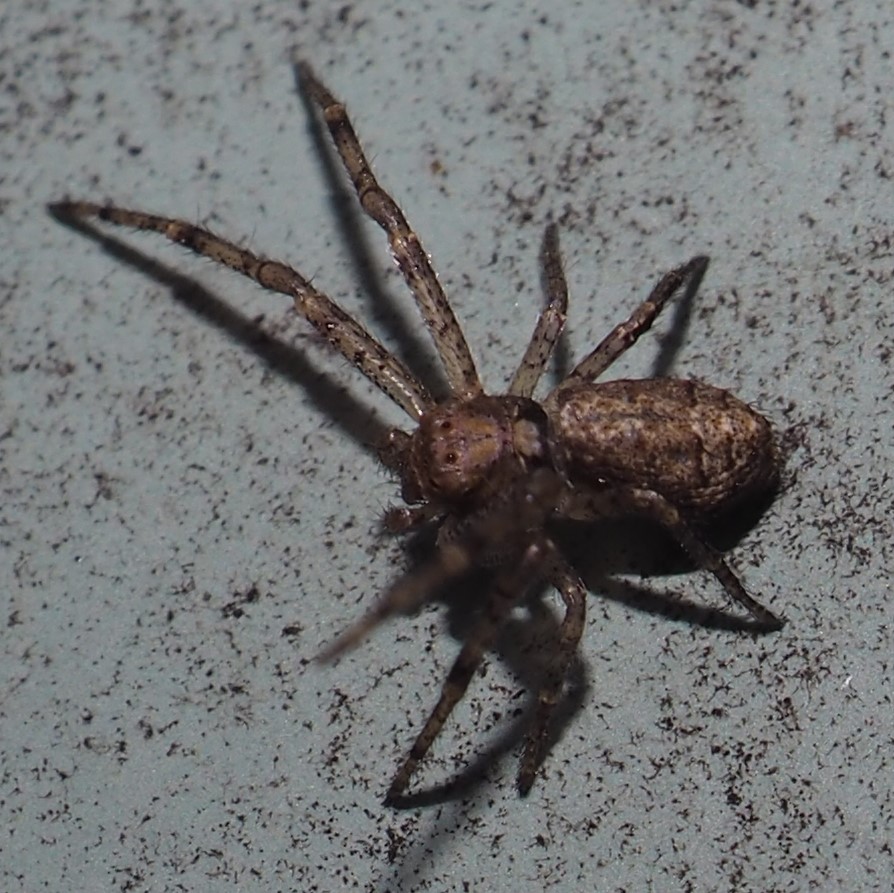
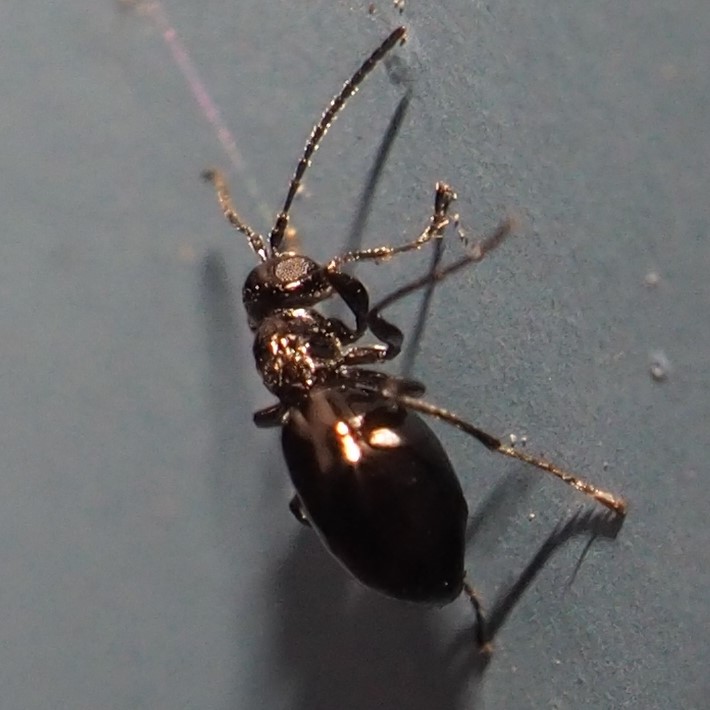
All right, the other day the pond melted and I got a couple big shots of the tree reflection in the pond. Lemme see which is the best. I just love seeing the pond with trees down in there, especially when there are some fish in the trees! Maybe this summer you can come and visit this peaceful spot on Earth!
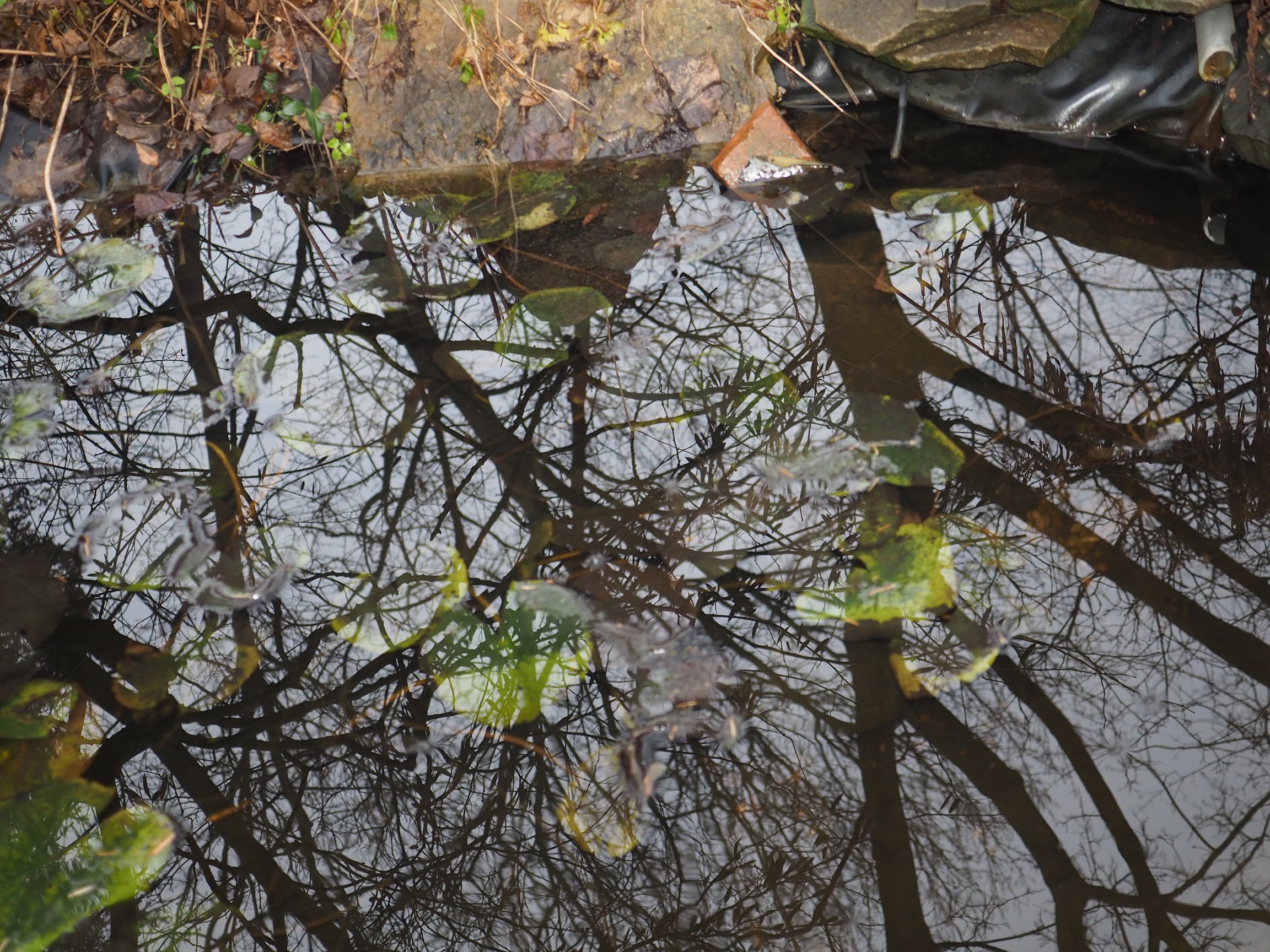 Love, Martha
Love, Martha
Back to December 2, 2018
Forward to December 30, 2018
Back to main menu
copyright Martha O'Kennon 2018








 and two tiny males 4 10 17 2.jpg)

















 moth in case 12 13 18 3
moth in case 12 13 18 4
moth in case 12 13 18 3
moth in case 12 13 18 4

























